Some of the links in this post may be affiliate links.
Are you wondering what the best soil choice is for your Rubber Tree plants? Your choice of potting mix is really important for the health of your plant. Whether you want to mix your own or use an amazing pre-packaged soil mixture right out of the bag, I have some great options for you!
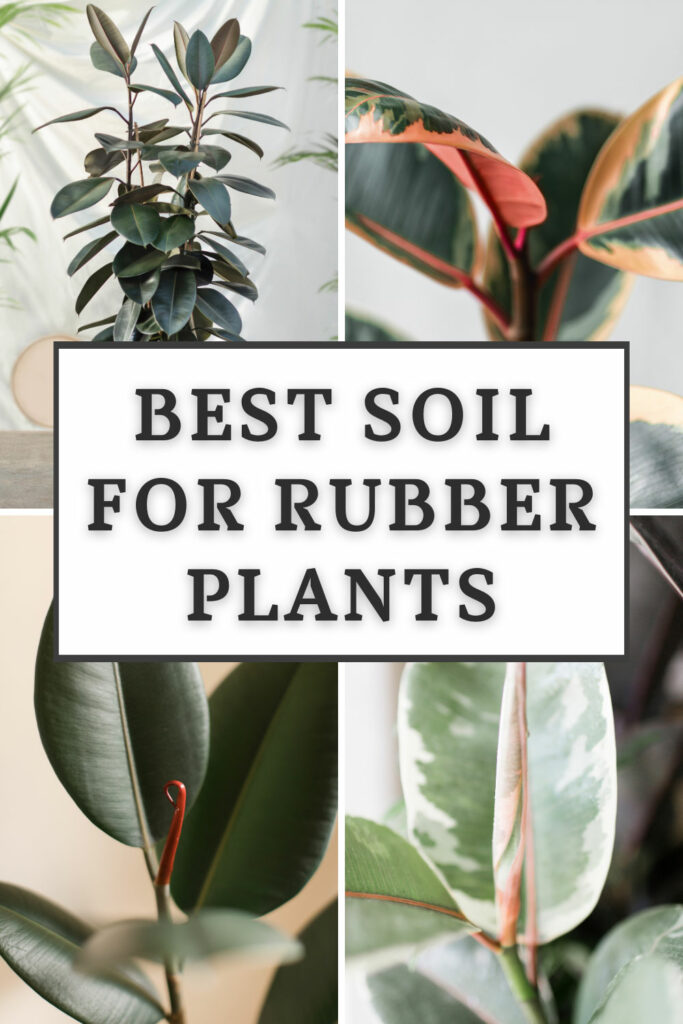
Table of Contents
BEST SOIL FOR RUBBER PLANT
A well-grown rubber plant is truly a beautiful sight. Although it is one of the most common indoor plants, it is also one of the most abused! By using one of the soil mixes in this post, you’ll be setting up your rubber plant for long-term success.
A native of southeast Asia, Ficus elastica, commonly known as the rubber plant, grows primarily in a wet, tropical biome. The key to success (other than providing sufficient light), is to maintain the right moisture level in your soil.
A well-draining soil is key. But at the same time, you still want one that retains enough moisture, but still dries out in a reasonable amount of time.
You can control these factors by choosing the right potting mix, as well as being attentive to your watering practices.
You can use the following 3 soil mixes for all types of rubber plants. The first two blends are amazing turn-key soil mixes for your rubber plant, and the third one is a simple DIY blend that you can easily make at home with 3 ingredients.
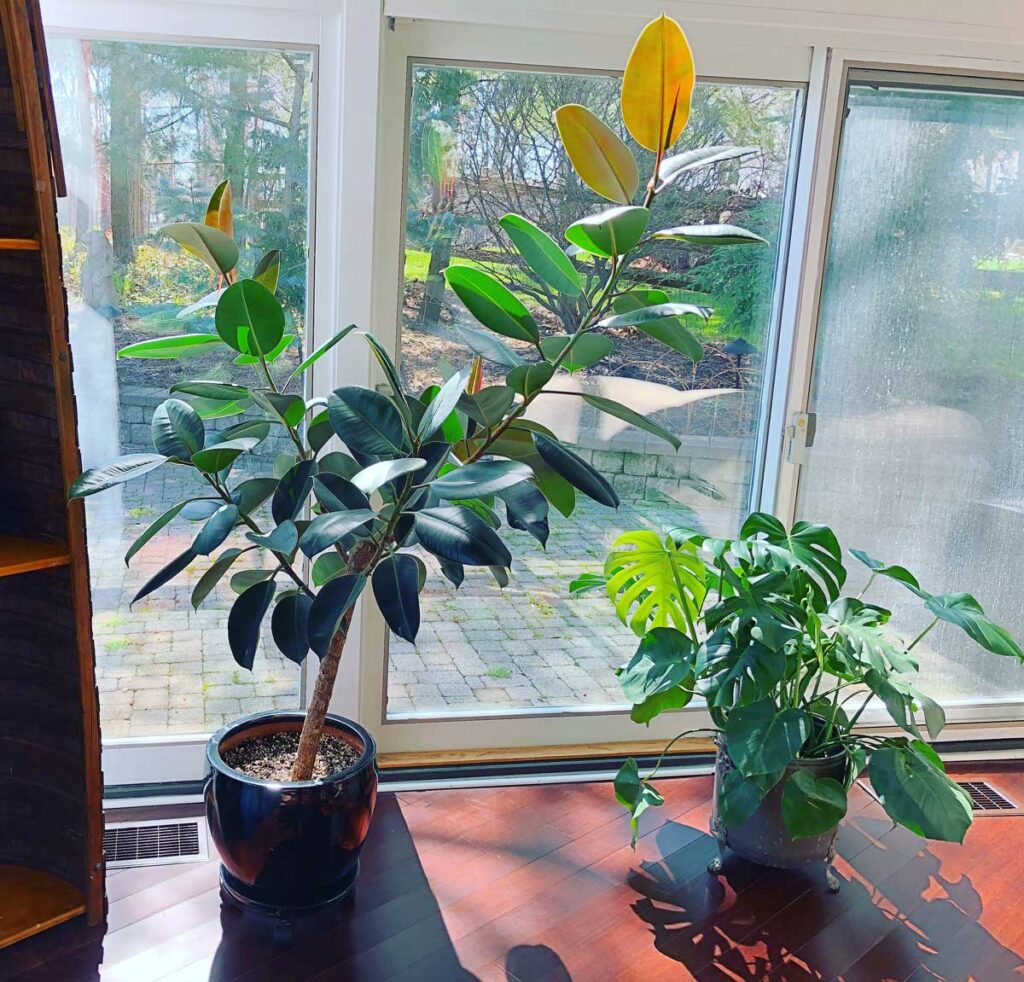
1. TROPICAL CLIMBER SOIL BLEND
Oftentimes, the potting mixes that come with your plant are not ideal for growing in average indoor conditions. They are meant for growing in commercial greenhouse conditions, which are a far cry from the growing conditions in your home.
If you want a turn-key, nutritious soil for your rubber plant, look no further than the Tropical Climber Soil Blend from Oh Happy Plants. And NO, the rubber plant is not a climber, but this mix is great for Ficus too.
Did you know that Ficus often start off their life as an epiphyte and then drops roots to the ground?
Why is this mix amazing for your rubber plant? There are many reasons:
– It retains enough moisture while retaining excellent drainage at the same time, so any risk of root rot is minimized.
– Ingredients are sustainable and the Oh Happy Plants blends use coco coir and coco chips. No peat moss is used in their blends.
– Organic, nutritious ingredients like alfalfa meal, flax seed meal and rock dusk offer important nutrients to your plant.
– A mycorrhizal inoculant is included in the mixes. This improves plant health and vigor and also helps to increase disease resistance naturally.
– Charcoal and humates are included in order to encourage a healthy root system.
As an added benefit, even the bags and labels are compostable!
With all the thought and research that has gone into developing these potting mixes, it is truly a no-brainer! Try the Tropical Climber Soil Blend for your rubber plant today. You will NOT be disappointed!
When you check out, you should see an automatic coupon code for 10% off applied at the shopping cart if you use my link to Oh Happy Plants for any of their products except bulk orders.
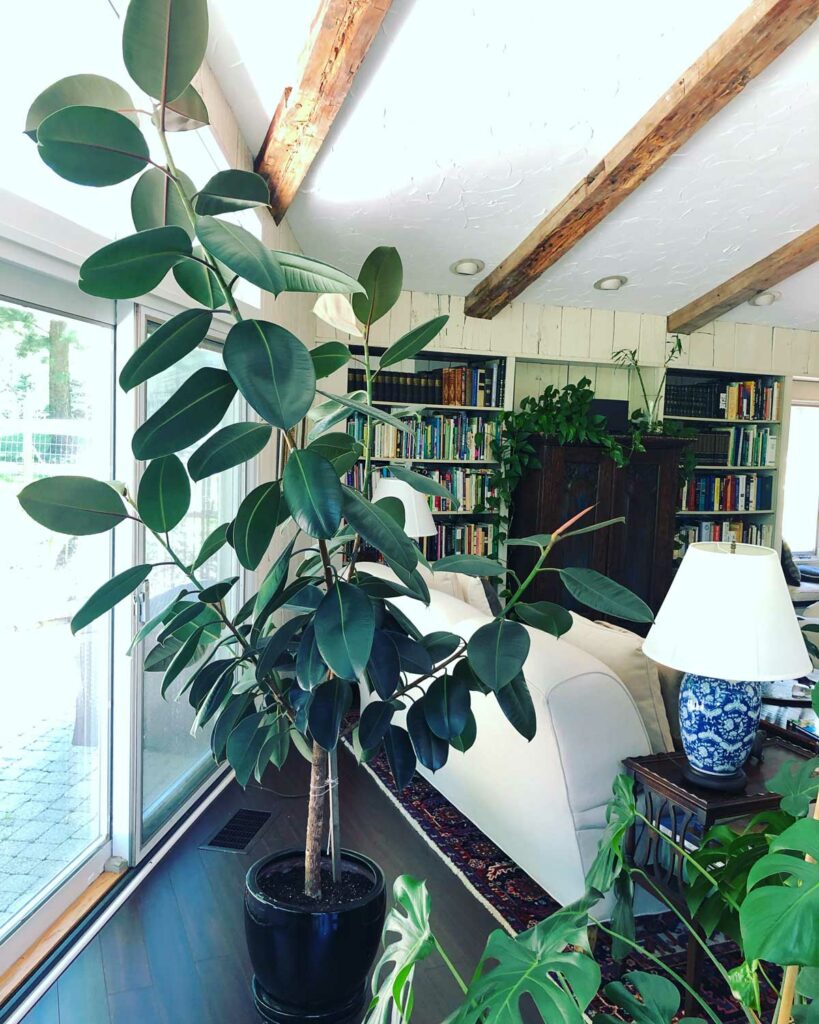
2. RAINFOREST SOIL BLEND
The Rainforest Soil Blend, also from Oh Happy Plants, is another amazing mix that is equally good. The only difference is that the Rainforest Soil Blend is formulated to have slightly more water retention than the Tropical Climber Soil Blend.
You can achieve equally good results with either, but you may want to go with the Rainforest Soil Blend if you’re planning on growing your Rubber Tree in brighter light.
Contrary to what you may have heard, rubber trees THRIVE in full sun! With more light, your soil will dry out faster, so the Rainforest Soil Blend will take just a little longer to dry out (but it still dries out in a reasonable amount of time).
So if you have a sunny window, I’d recommend the Rainforest Soil Blend over the Tropical Climber Soil Blend. Either of these blends will work great!
If you plan on growing your plant in “bright indirect light” (no direct sun on the leaves, but still in front of a window), you may want to consider the Tropical Climber Blend.
Regardless, all that will really change is the frequency of watering. Wait until the top 1-2 inches of your soil is dry before watering again.
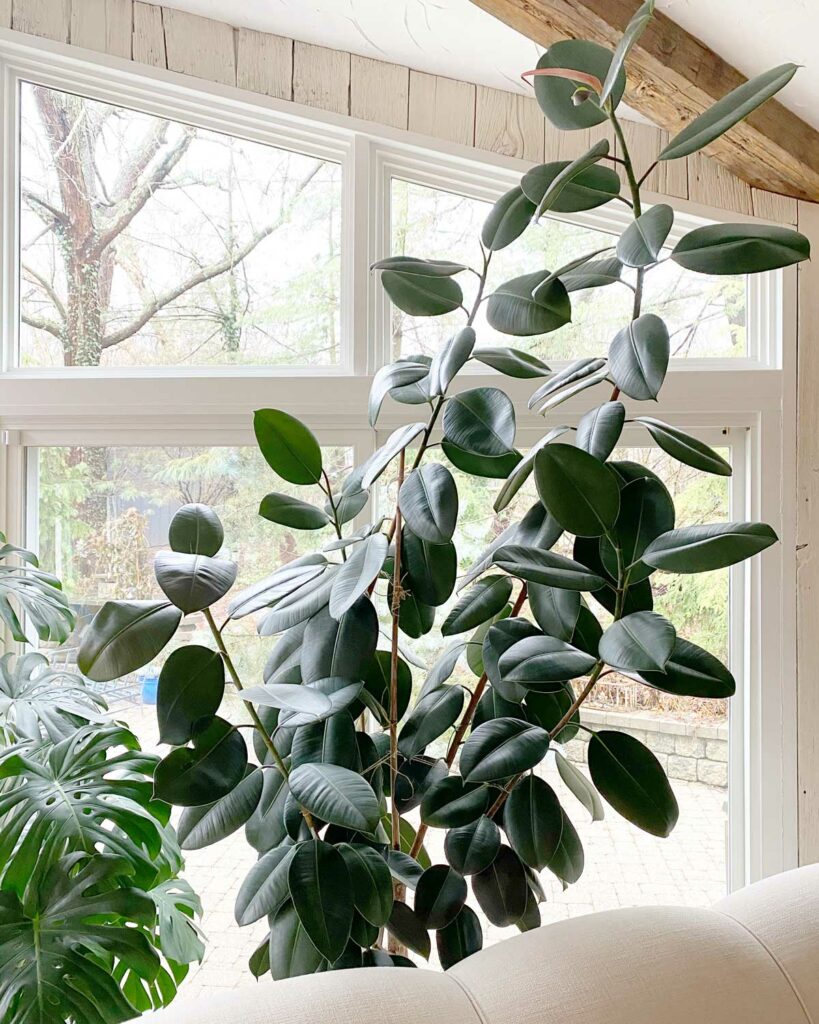
3. DIY MIX
If you like making your own blends, this is one that has worked very well for me. I simply mixed about 3 parts of Miracle-Gro potting mix, 1 part of perlite and 1 part of orchid bark.
The resulting mix is very well drained. The two mixes from Oh Happy Plants are still superior though because of the nutrients that are incorporated and the ingredients are more sustainable.
WHEN TO REPOT YOUR RUBBER PLANT
You really can repot at any time, but the best time to repot is near the beginning of the growing season, starting in late winter to early spring or so.
TIPS FOR WATERING YOUR RUBBER PLANTS
Please remember that there are so many more factors in rubber plant care than just having the right potting mix. And many types of potting mixes will work.
Some will dry out much faster than others, so it’s a matter of being flexible with your watering to cater to your specific mix.
Remember that the “chunkier” your potting mix, the more quickly it will dry out. This is just one factor, but how do you know when to water?
Simply use your finger and feel the potting mix. For small pots (say, 8 inches in diameter or less), allow the top inch to dry out before watering again.
For a larger pot (10 inches in diameter or more), you can allow the top couple inches to dry out before watering again.
If you allow your rubber plant’s soil to dry out completely, you will typically see yellow leaves at the base of the plant.
And if you have chronically dry soil, you will lose more and more of the lower leaves which your rubber plant will not grow back unless you prune your rubber plant.
If this has happened to your rubber plant, or maybe your plant is healthy and you want it to be fuller, check out my blog post on how to make a rubber plant bushy. You can spur new growth, but it will take some time and patience.
It is also helpful to understand how growing conditions affect how quickly your rubber plant soil will dry out. Because all our growing conditions are different, we shouldn’t use a strict “once a week watering schedule.”
It is important to be flexible and observe our plants to see exactly when they need to be watered, versus our calendar telling us when to water.
LIGHT
Bright light will cause the rate of photosynthesis to increase, so your rubber plant will use more water and the soil will dry out faster.
Low light conditions slow down photosynthesis and it will do the opposite.
Rubber plants are not low light plants and you may be shocked to learn that they thrive in full sun. If you have ever traveled to warm regions of the world, these are huge trees that grow in full sun.
Not giving these plants enough light indoors is one of the biggest pitfalls for growers.
POT SIZE AND POT TYPE
Both the pot size and pot type will affect how quickly your soil will dry out. A bigger pot will take longer to dry out than smaller pots. Porous pots like terra cotta will cause the soil to dry out much more quickly too.
And by all means, always have a drainage hole! Excess water needs a place to and it’s too big of a risk not to have good drainage in pots.
The extent to which your rubber plant is root-bound will also affect how quickly it dries out. Heavily root-bound plants that need repotting will dry out very quickly.
SOIL TYPE
The composition of the soil greatly affects how long it takes to dry out.
Incorporating chunky materials like perlite, pumice, orchid bark, etc. will improve drainage and cause the potting mix to dry out more quickly.
TEMPERATURE
In general, cooler temperatures slow down photosynthesis and warm temperatures increase it. Your rubber plant will use up more water with warmer temperatures, so its soil will dry out faster.
All these factors and more are included in my book, Houseplant Warrior: 7 Keys to Unlocking the Mysteries of Houseplant Care (link to Amazon).
I hope you’ve enjoyed this post on best soil for rubber plants.
For more information, check out my comprehensive rubber plant care post which includes 16 common problems that people experience with these plants, along with explanations and solutions.

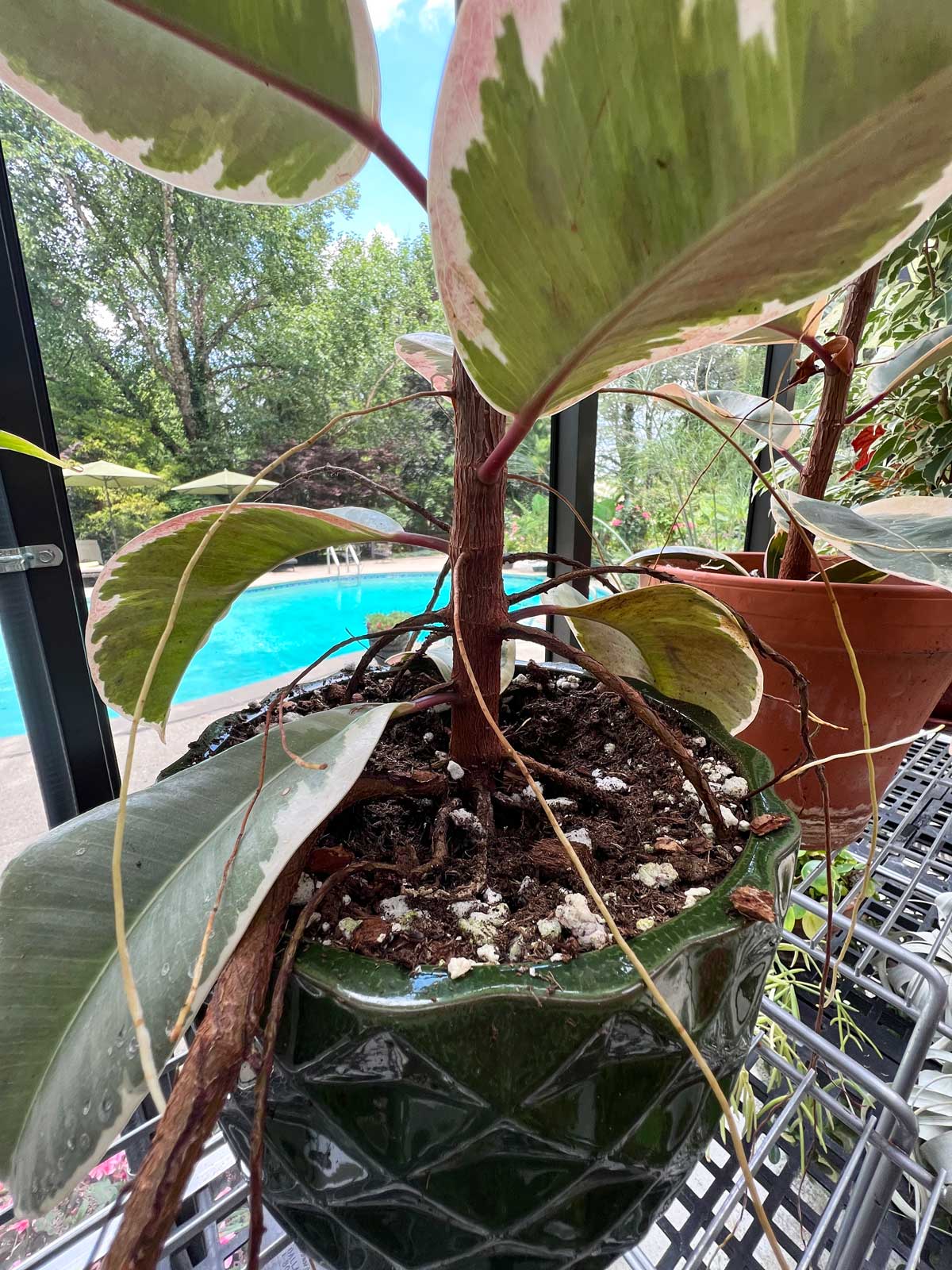
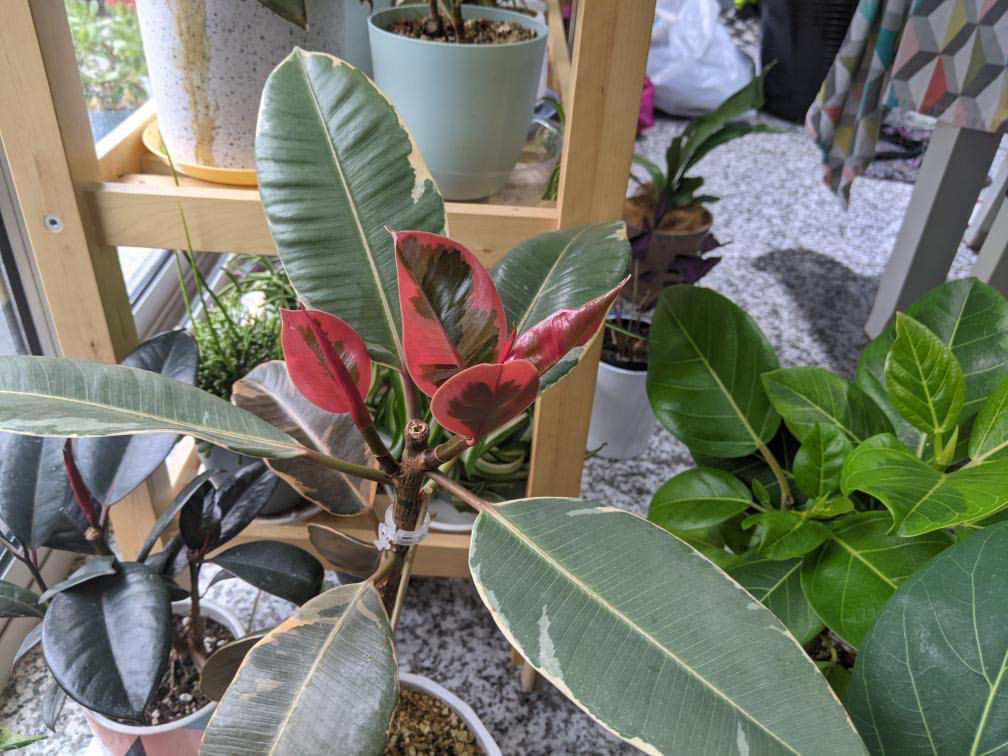
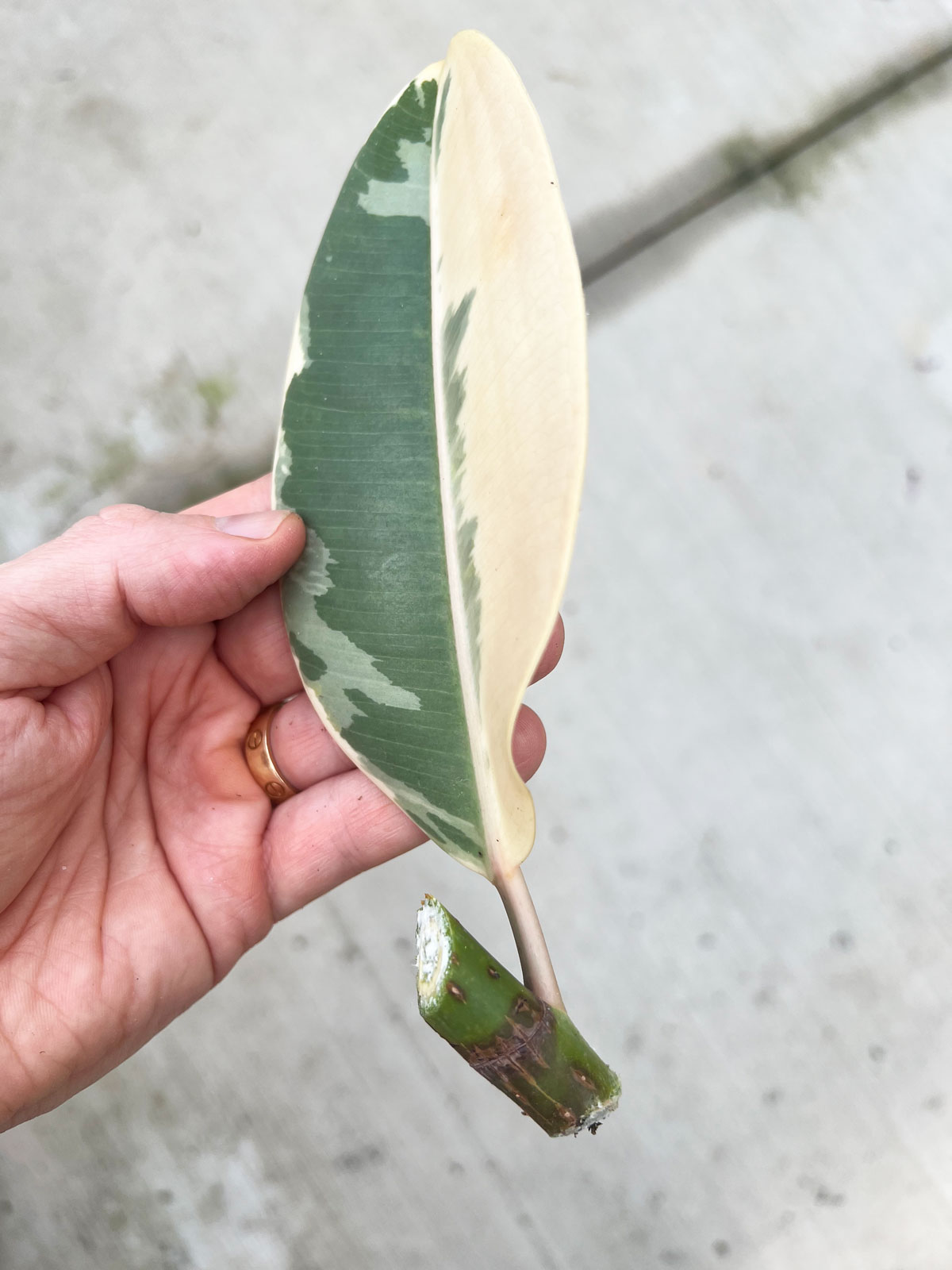
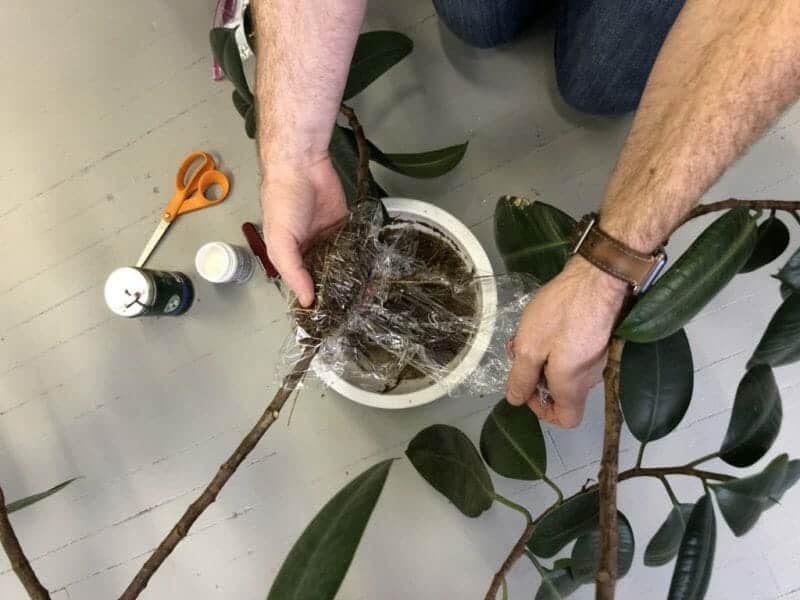
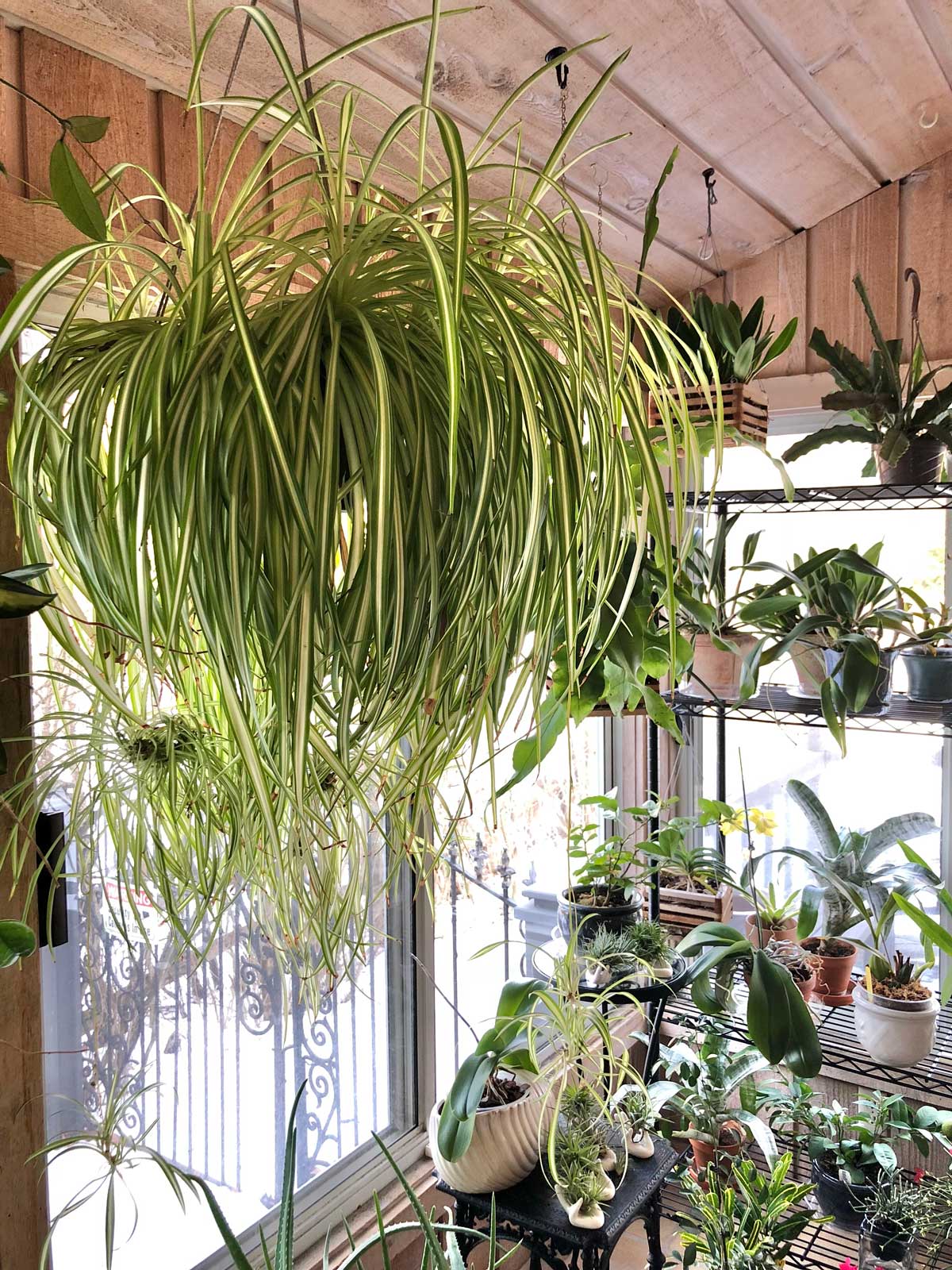
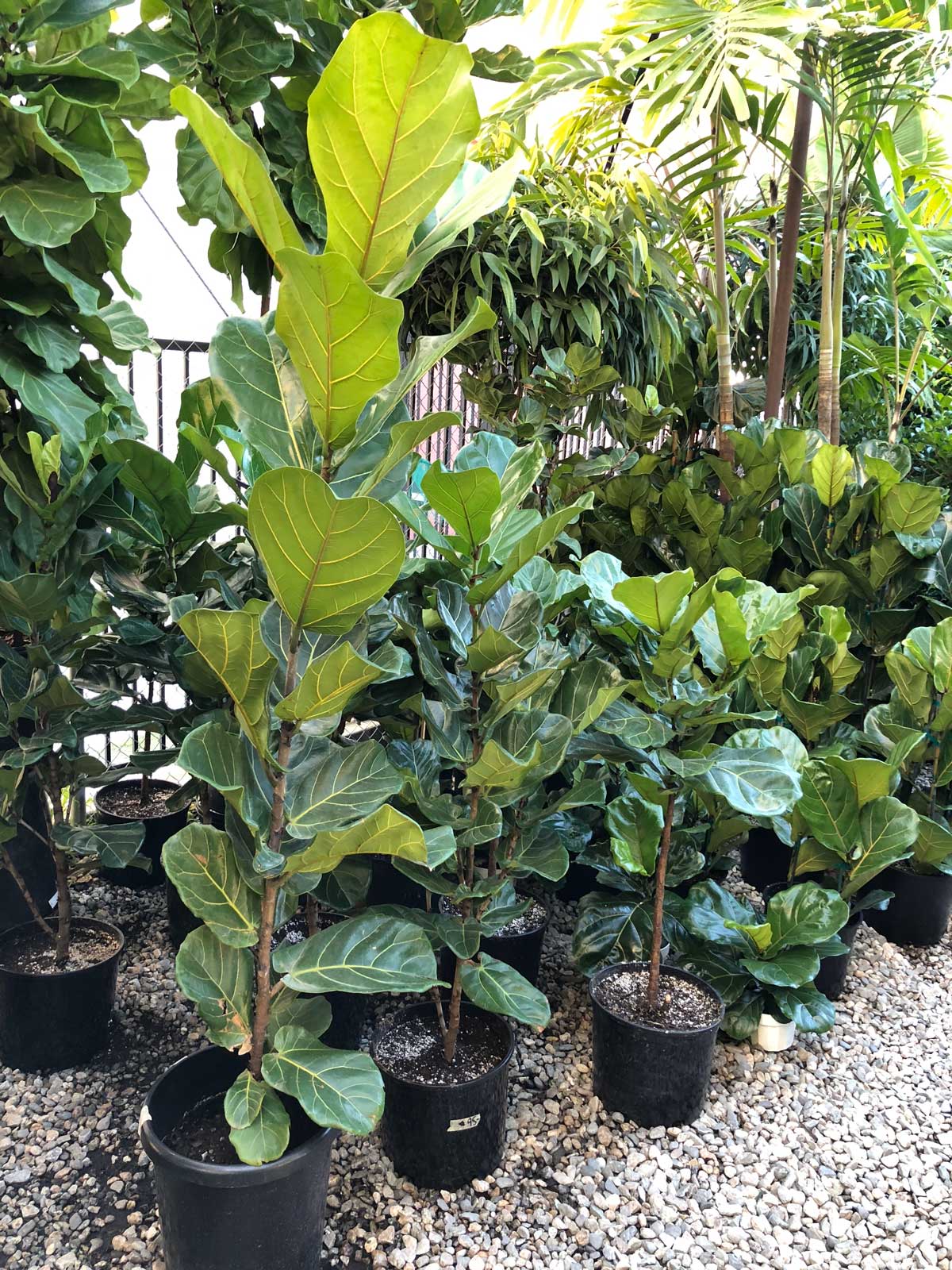
Wali Ahmed
Wednesday 19th of November 2025
Great article that I enjoyed, very helpful. I will be following, thanks.😊
Raffaele Di Lallo
Thursday 20th of November 2025
Glad you enjoyed it Wali!